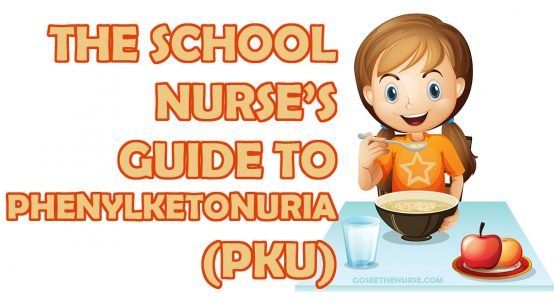
The AQI, or the Air Quality Index, is a measuring “tool” to determine how healthy (or unhealthy) the air is outside. This is not only for the respiratory-compromised. The EPA (Environmental Protection Agency) uses this simplified Air Quality Index or AQI to help report the air quality in a format that even we school nurses can understand. It gives us colors that we can relate to like a traffic light. But, unlike a three-light traffic light, we are given six colors.
Air…we don’t really think about it until we don’t have it…or, for us school nurses…until we have to determine whether or not it’s safe for children to be outside breathing it.
What makes air quality bad? What’s in the air that makes it bad or unsafe to breathe?
The AQI is calculated for four major air pollutants regulated by the Clean Air Act: ground-level ozone, particle pollution, carbon monoxide, and sulfur dioxide.
- Ground-level ozone
- Particle pollution
- Carbon monoxide
- Sulfur dioxide
Ground-level ozone: The ozone molecule (O3), when outside of the ozone layer, is harmful to breathe. Heck, it’s probably harmful to breathe IN the ozone layer, but the ozone layer is over 6 miles above our heads, and there’s very little breathable oxygen that high up. Even if you are climbing Mt. Everest, you’re still a mile (or so) below the ozone layer and if you are like most climbers, you’ll need supplemental oxygen when that high above sea level. (Shucks! I need oxygen sometimes just when climbing the stairs.)
So, what makes ozone harmful to breathe? Ozone is sometimes called smog. We know (so we’ve been told) that “smog” is harmful to breathe, but why? What is smog?
First, let me tell you a joke (chemistry folks will get this): Two men walk into a bar. The first one said, “I’d like a nice glass of H2O.” The second one says, “I’d like some H2O too.” The second man died.
Get it? H20 = Water…H2O too (H2O2) = Hydrogen Peroxide. Anyway…
That one extra oxygen molecule makes up an entirely different substance. Seems that an extra oxygen molecule may be pretty good. After all, if we breathe 2 oxygen molecules (O2) in our air that 3 oxygen molecules (O3 (Ozone)) will be even better for us. Nope…not in the least.
Ozone can cause the muscles in the airways to constrict, trapping air in the alveoli. This leads to wheezing and shortness of breath. (https://www.epa.gov/ozone-pollution/health-effects-ozone-pollution)
Where does ozone come from? To put it simply (kinda), ozone occurs when nitrogen oxides (NOx) and hydrocarbons, also called volatile organic compounds (VOCs) are “cooked” in the sun. Nitrogen oxides (NOx) and volatile organic compounds (VOCs) are produced (for the most part) when burning gas, oil, or coal. Also, during the evaporation of these elements like during fueling at the gas station. When these gasses are in the air, the sun “changes” them into ozone. This is why the air quality may worsen as the day progresses, and the mercury in the thermometer rises.
Particle pollution is also known as “particulate matter” and consists of a mixture of solids and liquid droplets. These particles are small…very small…and measure 10 micrometers or less (fine particles (2.5 micrometers or less in diameter) and coarse particles (2.5 and 10 micrometers in diameter)).
Consider that 1 inch = 25,400 micrometers. 2,540 of the largest of these particulates (10 micrometers) will fill an inch. They are teensy-tiny, but can be super-harmful.
Basically, this particulate matter floats around in our air, and we breathe them in and into our lungs. These particles become airborne from sources like smoke and dust that is “blown around” from passing cars.
Carbon monoxide is a familiar term to most everyone alive in our automobile-driven (no pun intended) society. We all know that automobiles create carbon monoxide. We that live in the Pacific Northwest know that carbon monoxide comes from fires…forest fires, particularly.
Carbon monoxide is the “classroom bully” in the school of the bloodstream. Carbon monoxide will bind to hemoglobin and “bully” the oxygen molecule out of its rightful place. Our bodies cannot use carbon monoxide and, when less oxygen is circulating in the body, we suffer for it with lower oxygen saturations.
What’s particularly interesting is that carbon monoxide levels are usually higher in the winter. This is seen during an inversion, where the carbon monoxide is usually “trapped” closer to the ground. Yes, there’s more to it, and the “whys” to an inversion are beyond the scope of this article. It’s kind of a catch-22. When it’s hot, the emissions of automobiles are “cooked” into ozone. When it’s cold, the emissions of automobiles linger in the air. Ahhh, beats walking, right?
Sulfur dioxide is produced when sulfur-containing fuels are burned. Generally, the highest levels of sulfur dioxide are found near power plants, refineries, and the like.
When sulfur dioxide gets into the air, it changes into sulfate particles and can ride the air for hundreds of miles. The nose and nasal passages were designed to get rid of much of the sulfur dioxide. The problem comes when mouth breathing is necessary, like during activity or an asthma episode.
Consider that each of these measured pollutants — ground-level ozone, particle pollution, carbon monoxide, and sulfur dioxide — has its own AQI Value and associated actions to protect your health from the pollutants. However, I like to keep it simple and refer to the overall Air Quality Index.
| Air Quality Index (AQI) Values | Levels of Health Concern | Colors |
|---|---|---|
| When the AQI is in this range: | …air quality conditions are: | …as symbolized by this color: |
| 0 – 50 | Good | Green |
| 51 – 100 | Moderate | Yellow |
| 101 – 150 | Unhealthy for Sensitive Groups | Orange |
| 151 – 200 | Unhealthy | Red |
| 201 – 300 | Very Unhealthy | Purple |
| 301 – 500 | Hazardous | Maroon |
| Note: Values above 500 are considered Beyond the AQI. Follow recommendations for the Hazardous category. Additional information on reducing exposure to extremely high levels of particle pollution is available here. | ||
You now understand the fundamentals of what is being tracked and measured and the effects that these pollutants have on the body. We know that “bad air” effects everyone, but especially the respiratory-compromised from the young to the older of us. And, as the school nurse, I am sure you are asking the magic question: When do I advise the decision-makers to keep the children inside the school for recess or breaks?
The AirNow.gov website (where most of this information was found) has a great site called: Air Quality and Outdoor Activity Guidance for Schools ((https://www.airnow.gov/index.cfm?action=flag_program.activityguid). They suggest a flag system that mimics the colors of their Air Quality Index (AQI) Values chart above. Here’s a copy of their chart:
Air Quality and Outdoor Activity Guidance for Schools | ||||||||||||||||
| Regular physical activity — at least 60 minutes each day — promotes health and fitness. The table below shows when and how to modify outdoor physical activity based on the Air Quality Index. This guidance can help protect the health of all children, including teenagers, who are more sensitive than adults to air pollution. Check the air quality daily at www.airnow.gov. View or print guide in PDF (PDF, 2 pp., 266KB, about PDF) | ||||||||||||||||
| ||||||||||||||||
There is no cut-and-dry answer to the question: Do we keep the kids inside today? There are other factors that may come into play such as humidity, how hot it is outside, and the activity level the child is used to performing or participating in. We should be aware that there are those children that are particularly susceptible are those children (and adults) who not only have a known cardiopulmonary issue/ challenge but also those children (and adults) who have had a primarily sedentary, indoor summer and are now back at school with friends and find themselves a bit out of shape for running, jumping, and carrying-on during recesses and breaks (and don’t forget PE and sports).
By following the suggestions of the EPA, we can guide our schools toward making decisions for the entire school. However, we school nurses should also be ready to make decisions for individual children. You’ve heard that quote is attributed to the German philosopher, Friedrich Nietzsche, right? There’s some wisdom in his philosophy…but…as the school nurse…I just soon not put Mr. Nietzsche’s philosophy to the test.
Here’s another question: What happens when we move past purple? What happens when the air quality is beyond the purple or the air quality is considered Beyond the AQI (above 500 or “beyond index” )?
First of all, PM2.5 refers to particulate matter (PM) that have a diameter of less than 2.5 micrometers. These are tiny little particles that bypass the mucosal membrane protection of the airway and will make their way to the deepest parts of our airway. These particles are even small enough for absorption into our circulatory system.
If the particulate matter measures 2.5 (PM2.5) are above 500, I would hope that our community leaders would offer advice and guidance. That advice and guidance should sound something like: “Stay indoors with filtered air and reduce your activity levels.”
Trivia: I have no reason to argue with this website: http://thomasbirtch.com/blog/can-air-quality-index-aqi-measures-be-converted-to-equivalent-number-of-cigarettes-smoked-over-time-being-exposed-to-this-air-quality-reading-for-24-hours-would-be-equivalent-to-smoking-how-many-cigarettes, but it suggests that an AQI reading of 202 PM 2.5 is equivalent to smoking 9.36 cigarettes per day.
Lastly (and food for thought): If the outside air is bad, why is the inside air any better? Truth be known…it’s probably not. The U.S. Environmental Protection Agency (EPA) studies of human exposure to air pollutants indicate that indoor levels of pollutants may be two to five times — and occasionally more than 100 times — higher than outdoor levels.
Quotes on Breathing (one of my favorite things to do…breathing, that is):
“Oh no. Don’t smile. You’ll kill me. I stop breathing when you smile.”
― Tessa Dare (I was going to woo my wife with this one but she’s my editor and will now know that I didn’t make this quote up).
“I am never alone wherever I am. The air itself supplies me with a century of love. When I breathe in, I am breathing in the laughter, tears, victories, passions, thoughts, memories, existence, joys, moments, and the hues of the sunlight on many tones of skin; I am breathing in the same air that was exhaled by many before me. The air that bore them life. And so how can I ever say that I am alone?”
― C. JoyBell C.
“Breath is the finest gift of nature. Be grateful for this wonderful gift.”
― Amit Ray
“Yes, they are elves,” Legolas said. “and they say that you breathe so loud they could shoot you in the dark.” Sam hastily covered his mouth.”
― J.R.R. Tolkien
“I do my job like I breathe — so if I can’t breathe I’m in trouble.”
― Karl Lagerfeld



